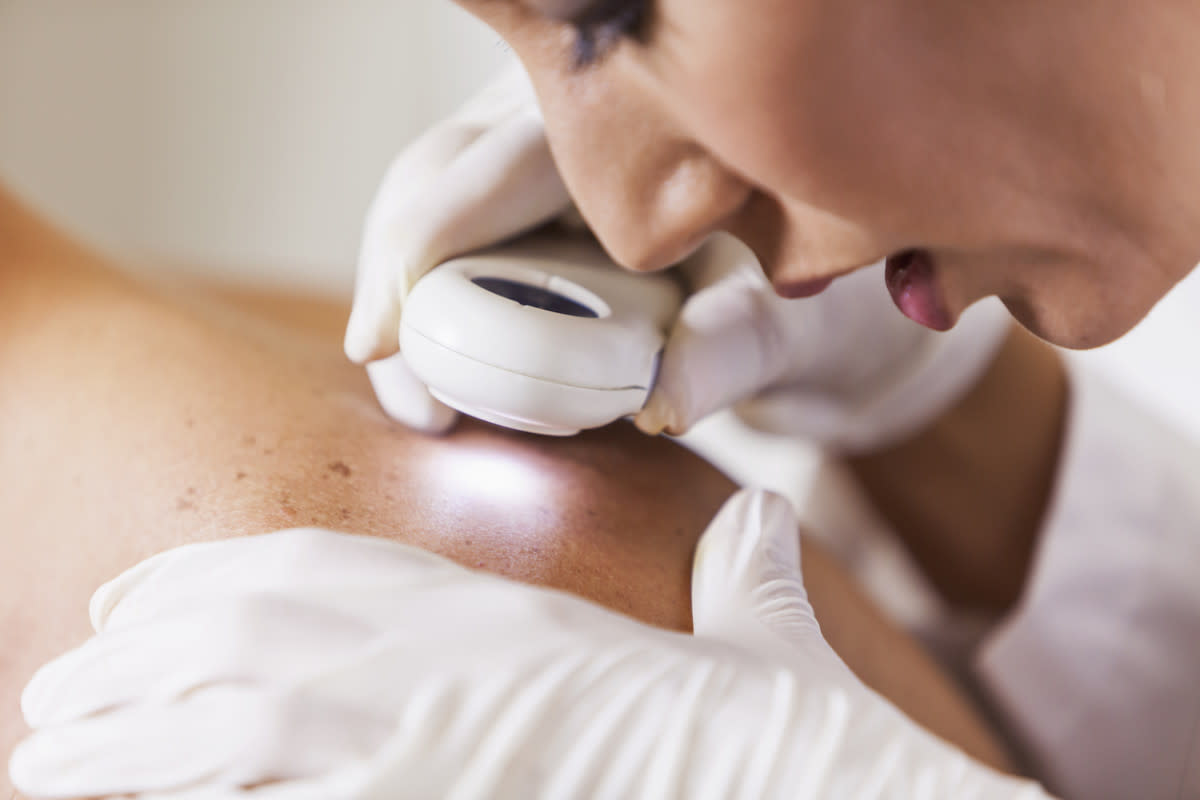The #1 Early Sign of Skin Cancer Most People Miss, According to Dermatologists

Every year, approximately 3.3 million Americans are diagnosed with skin cancer. Here’s the good news: there are easy ways to reduce your risk, which can prevent many forms of skin cancer. More good news? The five-year survival rate for people whose melanoma (a common form of skin cancer) is detected and treated before it spreads is 99 percent. (After it spreads to the lymph nodes, the five-year survival rate drops down to 68 percent.) This is exactly why knowing the early signs of skin cancer is essential.
Not sure what the early signs are? Keep reading to find out and to get tips on how to lower your risk.
Related: Here's the Latest on Skin Cancer Treatment
The Best Ways To Protect Yourself From Skin Cancer
Dr. Michael I. Jacobs, MD, a board-certified dermatologist, associate professor of dermatology at Weill Cornell Medical College, and the medical technology director at Cortina, explains that the number one cause of skin cancer is UV rays from sunlight. Because of this, he says that the number one way to minimize your risk is to limit unprotected exposure to the sun (and tanning beds—using UV tanning beds increases the risk of skin cancer too).
“I recommend always using SPF 50+ anytime you will be in the sun and wearing sun-protective clothing as well,” Dr. Jacobs says. He also says that UV rays are the strongest between 10 a.m. and 2 p.m., so if you’re outside during that time frame, you should be extra mindful about sun protection. “Harmful sun rays are stronger at the beach in a boat with reflection of sunlight from the water and sails, and at a high altitude,” he adds.
Dr. Daniel Glass, MD, a skin disease specialist and consultant dermatologist at Dermatology Clinic London, says that having a family history of skin cancer or having fair skin increases the risk of skin cancer. So if either applies to you, it’s even more important to be diligent about protecting your skin from UV rays.
Related: The Top Three Types of Skin Cancer—And How You Can Avoid Them
The Most Commonly Missed Early Skin Cancer Sign, According to Dermatologists
As with other forms of cancer, when it comes to skin cancer, early detection is key. That’s where being able to identify the early signs comes in. There’s one early sign in particular that Dr. Jacobs says people often miss. “A new pigment spot that appears to be a mole or freckle is the most commonly missed early sign of skin cancer,” he says.
Dr. Jacobs explains that many people are told to look for changes in existing moles, like color, shape or size, but they may not pay as much attention to new pigmented lesions that form which can lead to them being overlooked.
So, if you have what looks like a new freckle or mole that didn’t exist on your body before, it’s absolutely worth it to book an appointment with a dermatologist so they can get a closer look.
Related: Your Top Skin Cancer Questions Answered
Of course, if you do notice a change in existing moles or spots on your body, Dr. Glass says that that’s worth getting checked out too. “Skin cancer will often present as a changing or enlarged lesion on the skin,” he says, adding that this may be a change in shape or color. He says that, sometimes, a lesion can bleed or become sore and itchy.
Dr. Glass says that many people believe that a lesion has to be raised or darkly pigmented to be concerning. This isn’t true. “In fact, skin cancers can be flat and can be red in color—not only dark brown or black,” he says.
With all of this in mind, any changes in spots on your body should be checked out by a dermatologist. That includes spots that are new, have changed color, changed shape or changed texture.
Dermatologists are trained in finding early signs of skin cancer, which is why it’s important to see a dermatologist once a year (and even more frequently if you are at high risk for skin cancer). There could be a lesion on part of your body you can’t see but a dermatologist will be able to.
By protecting your skin from the sun, getting any changes on your skin checked out, and seeing a dermatologist once a year, you will be taking three majorly important steps to minimize your risk for skin cancer—dermatologist-approved!
Next up, find out what skin cancer apps doctors recommend and tips for how to use them.
Sources
Dr. Michael I. Jacobs, MD, board-certified dermatologist, associate professor of dermatology at Weill Cornell Medical College, and the medical technology director at Cortina
Dr. Daniel Glass, MD, skin disease specialist and consultant dermatologist at Dermatology Clinic London

